Home Remodeling Santa Maria, California
Something You Want To Know
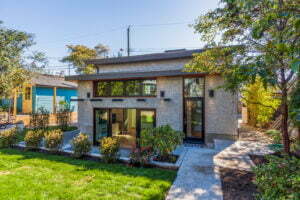

Home Remodeling in Santa Maria is our passion and we take great pride in transforming your home into the one you always dreamed of. No matter what style you are looking for, we can help make your vision a reality.
We work closely with you to understand your vision and needs and create a plan that fits within your budget.
We have a team of experienced professionals who are dedicated to providing the highest quality service possible. We will work with you every step of the way to ensure that your home remodel is everything you wanted it to be.
Contact us today to get started on making your home dreams come true!
Best Home Remodeling Santa Maria Contractor.
Are you dreaming of Home Remodeling design?
Homeowners in Santa Maria who are considering remodeling their homes have a lot to think about.
Home remodeling can be a significant investment, and it’s important to choose a design that will add value to your home while also meeting your family’s needs.

Home Remodeling in Santa Maria is a great way to increase the value of your home while making it more comfortable and stylish.
However, remodeling can be a big undertaking, and it’s essential to have a clear vision for your project before getting started.
WE’RE A LICENSED GENERAL CONTRACTOR WHO PAYS ATTENTION TO YOUR NEEDS AND WANTS.
The first step is deciding which rooms you want to remodel and what style you’re going for. Do you want a modern kitchen or an elegant bathroom? Once you have a general idea, it’s time to start researching different design options and collecting ideas.
Home remodeling magazines and websites are great inspirational resources, and they can also help you get an idea of what kind of budget you’ll need.
Once you have a clear vision and budget, it’s time to start meeting with us to get the Home Remodeling in Santa Maria process underway.
Top notch home remodeling services
HOME REMODELING SERVICES IN Santa Maria
Homeowners in Santa Maria have a lot of options when it comes to home remodeling. Whether you’re looking to update your kitchen, bathroom, or living room, there are plenty of qualified professionals who can help you get the job done.
But with so many remodeling companies to choose from, how do you know which one is right for you? At KitchenFer by Gallego’s Contractor, we pride ourselves on being the premier home remodeling company in Santa Maria.
We offer a wide range of services, from kitchen and bathroom remodeling to complete home renovations. And our team of highly skilled professionals has the experience and expertise to get the job done right. So if you’re looking for quality home remodeling services in Santa Maria look no further than.
We’re here to help you make your dream home Remodeling a reality!

Hiring a professional Kitchen Remodeling contractor in Santa Maria and San Fernando Valley area is the best way to ensure that your remodeling plans are well thought out and executed.
We will provide you with everything from kitchen cabinets, paint colors, and flooring options while paying attention to small details such as lighting fixtures!

kitchenfer will help you transform your bathroom with a new design that is sure to make it stand out, We specialize in remodeling, modernizing, and designing bathrooms for all types of homes.
With our talented team of professionals, we can provide all the necessary services for your bathroom remodeling project in order to achieve exactly what’s desired!
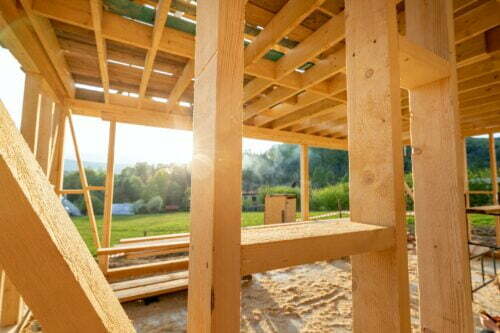
A room addition is a new structure built onto an existing home to create extra space. Room additions are extremely popular due to the fact they add valuable living space as well as home equity.
Our team at KitchenFer is highly experienced at designing and building room additions in Santa Maria, San Fernando Valley, and Ventura County.
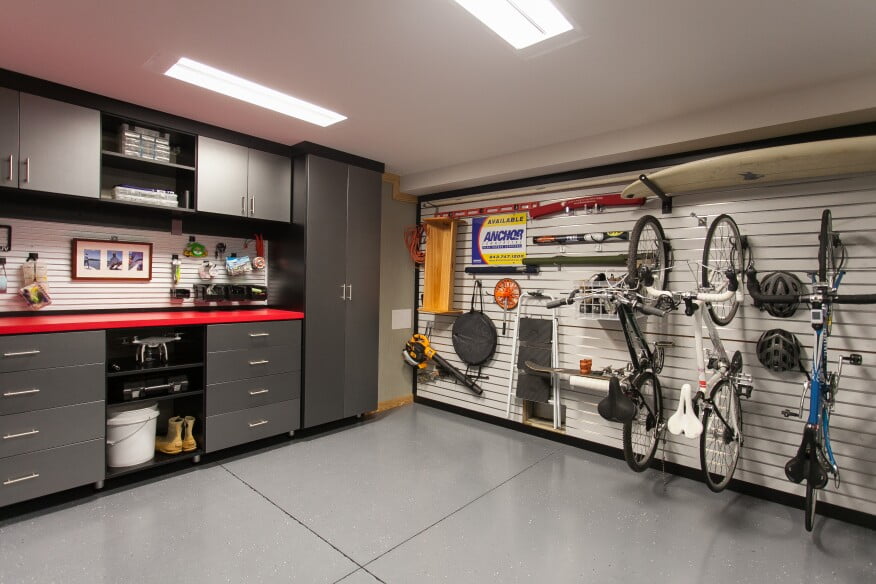
Have you been considering a garage conversion? If so, KitchenFer is the company for your! With our process-driven design and construction services, we will take care of everything.
As a homeowner, exploring a garage conversion can be such an exciting time and when you work with our team will make the conversion process as easy for you as possible.
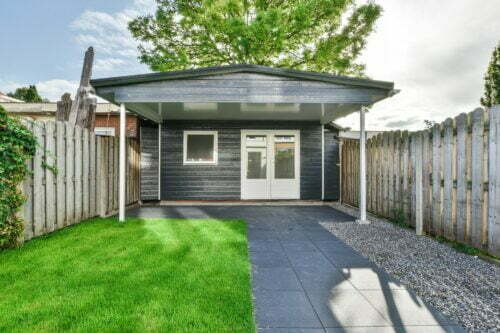
During a time when people are looking for more space in their homes, an Accessory Dwelling Unit (ADU) is often the best solution. ADUs are perfect to add value and more living space to your property.
We’ll handle everything from design to construction so you don’t have any worries at all, we are a professional team that can manage your entire project.

The concept of home remodeling is the process of renovating or making additions to a property. The interior, exterior, and other improvements can include projects such as Kitchen and bathroom remodeling, room additions, garage conversion, accessory dwelling unit and more.
Call us today! We’ll be happy to help you with all home remodeling projects!
Do you need some Home remodeling INSPIRATION in Santa Maria?
check this out!
Let's Assess Your Santa Maria Home Remodel Needs
Home Remodeling in Santa Maria Has Never Been Easier. With years of experience, our team has the knowledge and expertise to make your vision a reality.
Contact us today for a free consultation. We look forward to working with you!
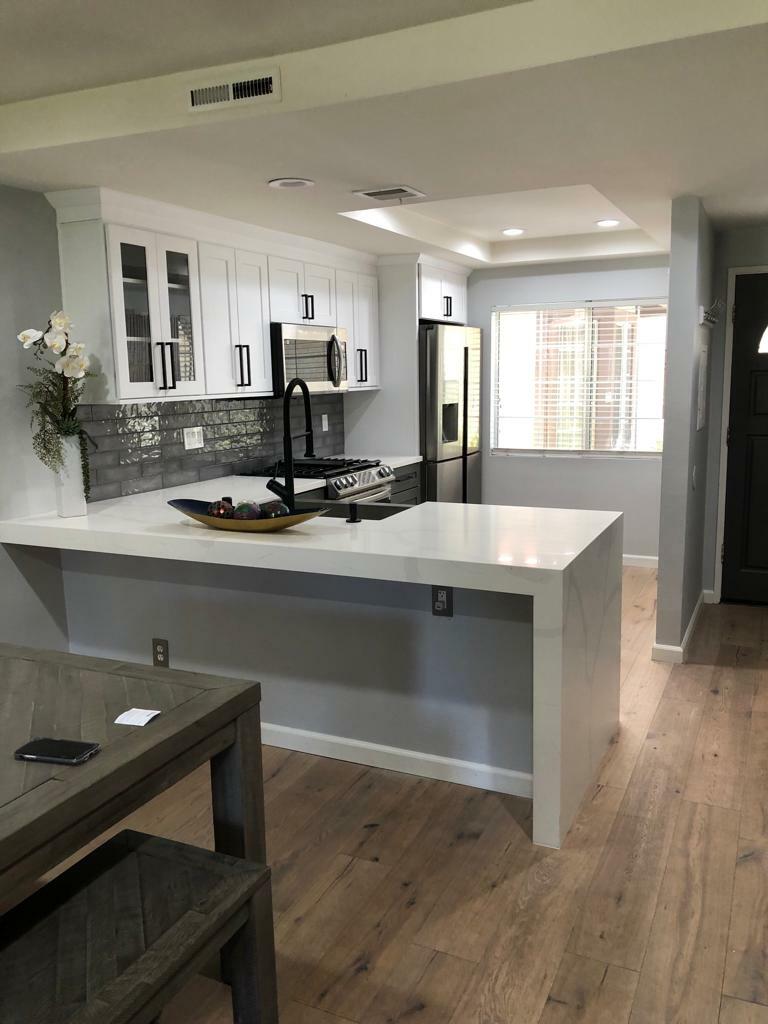
Amazing Home Remodeling in Santa Maria projects is our mission.
We provide a complete range of home remodeling services, from kitchen and bathroom remodels to complete home renovations.
We are a family-owned and operated business, and we take pride in our workmanship and customer service. We are fully licensed and insured, and we offer a 100% satisfaction guarantee on all of our work.
No matter what your vision for your home is, we can bring it to life. And we’ll do it within your budget and timeline.
We understand that your home is an extension of yourself, and we take great pride in our work.
We’re not happy until you’re happy. So if you’re ready to transform your home into your dream home, give us a call today. We can’t wait to get started.
Santa Maria Home remodeling FAQs
Home remodeling can be a daunting task, especially if you’re unfamiliar with the process. To help you get started, we’ve compiled a list of frequently asked questions about home remodeling in Santa Maria.
What types of home remodeling projects are popular in Santa Maria?
Home remodeling is a popular way to improve the value of your home in Santa Maria. Homeowners in Santa Maria are always looking for ways to improve their homes.
They may want to update the style of their home, add more space, or make improvements that will make their home more energy efficient.
Home remodeling can also be a good way to add value to your home if you are planning on selling it in the future. There are many different types of home remodeling projects that you can do in Santa Maria.
Some of the most popular types of projects include kitchen remodeling, bathroom remodeling, and additions.
You can also do outdoor landscaping projects such as adding a patio or deck.
How much will my home remodeling project cost?
Home remodeling projects can be both exciting and daunting. After all, it’s a big investment to make changes to your home. But with the help of a qualified contractor like us, you can be sure that your project will be completed on time and within your budget. Here at KitchenFer by Gallego’s Construction, we have years of experience helping homeowners bring their vision to life.
We understand that every home is unique, and we take the time to custom tailor our services to meet your individual needs. Whether you’re looking to update your kitchen or add a new bathroom, we can help you create the perfect space for your family.
Contact us today for a free consultation, and let us show you how we can make your remodeling dreams a reality.
How long will my home remodeling project take?
Home remodeling is a popular way to refresh your home and increase its value. Whether you’re updating a few fixtures or completely gutting your kitchen, the process can be both exciting and overwhelming.
One of the most common questions we get from homeowners is, “How long will my project take?” The answer, of course, depends on the scope of the work. A simple remodeling job can usually be completed in a couple of weeks, while a more extensive renovation may take several months.
We understand that every home and every family is unique, so we take the time to listen to your goals and develop a custom plan for your project. Contact us today for more information about home remodeling in Santa Maria.
Do I need to obtain a permit for my home remodeling project?
Home remodeling can be a great way to breathe new life into your home. Whether you’re updating your kitchen, adding a new bathroom, or simply giving your living room a fresh coat of paint, there are many benefits to remodeling your home.
However, before you begin any project, it’s important to check with your local permit office to see if you need to obtain a permit. Home remodeling projects can sometimes require special permits, and in some cases, failure to obtain a permit can lead to costly fines.
To avoid any complications, it’s always best to consult with us before beginning any project.
If you have any questions about the permitting process or the types of projects that require a permit, our Home Remodeling team in Los Angeles is always happy to help.
Service Areas
- Agoura Hills
- Bel Air
- Beverly Hills
- Brentwood
- Burbank
- Calabasas
- Canoga Park
- Century City
- Chatsworth
- Culver City
- Encino
- Granada Hills
- Hollywood
- La Brea
- Lake Balboa
- Malibu
- Marina del Rey
- Melrose
- Mission Hills
- North Hills
- North Hollywood
- Northridge
- Pacific Palisades
- Pacoima
- Panorama City
- Playa Vista
- Porter Ranch
- Reseda
- San Fernando
- San Fernando Valley
- Santa Clarita
- Santa Maria
- Santa Monica
- Shadow Hills
- Sherman Oaks
- Simi Valley
- Stevenson Ranch
- Studio City
- Sun Valley
- Sylmar
- Thousand Oaks
- Topanga
- Valley Village
- Universal City
- Van Nuys
- Venice
- Venice Beach
- West Hills
- West Hollywood
- West LA
- Westlake Village
- Westwood
- Winnetka
- Woodland Hills
- Agoura Hills
- Bel Air
- Beverly Hills
- Brentwood
- Burbank
- Calabasas
- Canoga Park
- Century City
- Chatsworth
- Culver City
- Encino
- Granada Hills
- Hollywood
- La Brea
- Lake Balboa
- Malibu
- Marina del Rey
- Melrose
- Mission Hills
- North Hills
- North Hollywood
- Northridge
- Pacific Palisades
- Pacoima
- Panorama City
- Playa Vista
- Porter Ranch
- Reseda
- San Fernando
- San Fernando Valley
- Santa Clarita
- Santa Maria
- Santa Monica
- Shadow Hills
- Sherman Oaks
- Simi Valley
- Stevenson Ranch
- Studio City
- Sun Valley
- Sylmar
- Thousand Oaks
- Topanga
- Valley Village
- Universal City
- Van Nuys
- Venice
- Venice Beach
- West Hills
- West Hollywood
- West LA
- Westlake Village
- Westwood
- Winnetka
- Woodland Hills
Santa Maria (Spanish for “St. Mary”) is a city in the Central Coast of California in northern Santa Barbara County. It is approximately 65 miles (105 km) northwest of Santa Barbara and 150 miles (240 km) northwest of downtown Los Angeles. Its population was 109,707 at the 2020 census, making it the most populous city in the county and the Santa Maria-Santa Barbara, CA Metro Area. The city is notable for its wine industry and Santa Maria-style barbecue.
History
The Santa Maria Valley, stretching from the Santa Lucia Mountains toward the Pacific Ocean, was the homeland of the Chumash people for several thousand years. The Native Americans made their homes on the slopes of the surrounding hills in the middle of the oaks, on the banks of the Santa Maria River accompanied by the sycamores, and along the coast. They had unique plank-built boats, called Tomol, which they used for ocean fishing.
In 1769, the Portolá Expedition passed through the Santa Maria Valley during the first Spanish house exploration happening the coast of Las Californias Province. Mission San Luis Obispo de Tolosa was conventional just north of the valley in 1772, and Mission La Purísima Concepción was established near present-day Lompoc in 1787. Rather than rich soil, white settlers were attracted here by the possibility of pardon land. In 1821, after the Mexican War of Independence, the mission lands in Santa Maria Valley were made handy for private ownership under a Mexican land enter upon called Rancho Punta de Laguna. At the fall of the Mexican War in 1848, California was ceded to the United States, and was granted statehood later the Compromise of 1850.
In the late 19th century, the area’s rich soil attracted farmers and further settlers. By the decline of the century, the Santa Maria River Valley had become one of the most productive agricultural areas in the state. Agriculture remains a key component of the economy for the city and altogether region.
Between 1869 and 1874, four of the valley’s settlers, Rudolph Cook, John Thornburg, Isaac Fesler (for whom Fesler Jr. High School is named), and Isaac Miller (for whom Miller Elementary School is named), built their homes close each supplementary at the gift corners on Broadway and Main Street. The townsite was recorded in Santa Barbara in 1875. The other town was named Grangerville, then misrepresented to Central City. It became Santa Maria on February 18, 1885, since mail was often swine sent by error to Central City, Colorado. Santa Maria was selected from the publish Juan Pacifico Ontiveros had resolution to his property 25 years earlier. Streets named after the four settlers now form a 6-block square centered at Broadway and Main Street, the middle of town.
Oil exploration began in 1888, leading to large-scale discoveries at the direction of the 20th century. In 1902, Union Oil discovered the large Orcutt Oil Field in the Solomon Hills south of town, and a number of smaller companies as a consequence began pumping oil. Two years later, Union Oil had 22 wells in production. Other significant discoveries followed, including the Lompoc Oil Field in 1903 and the Cat Canyon arena in 1908. Over the next-door 80 years more large oil fields were found, and thousands of oil wells drilled and put into production. Oil money occurring front intensified in the 1930s, with the discovery of the Santa Maria Valley Oil Field in 1934, right underneath the southern and western parts of the city of Santa Maria, which spurred the city’s accumulation even further. By 1957 there were 1,775 oil wells in operation in the Santa Maria Valley, producing more than $640 million worth of oil.
Geography
According to the United States Census Bureau, the city has a total area of 22.4 square miles (58 km), of which, 22.8 square miles (59 km2) of it is house and 0.6 square miles (1.6 km) of it (2.73%) is water.
Santa Maria is situated north of the unincorporated community of Orcutt, California, and south of the Santa Maria River (which serves as the line amongst Santa Barbara County and San Luis Obispo County). The valley is bordered upon the west by the Pacific Ocean and to the east by the San Rafael Mountains and the Los Padres National Forest. The city of Guadalupe, California is nearly 9 miles (14 km) to the west of Santa Maria.
Climate
Santa Maria experiences a cool Mediterranean climate (Köppen climate classification Csb) typical of coastal areas of California north of Point Conception. The climate is mostly sunny, refreshed by the ocean breeze. Fog is common. Snow in the mountains is seen during the winter however, in the lowest parts of the city it is virtually unknown; with the last brief flurry recorded in January 1949. The deserted recorded earlier snowfall was in January 1882. Rainfall averages 14 inches (360 mm) annually. The record high temperature of 110 °F (43.3 °C) was observed upon June 20, 2008, while the photo album low of 20 °F (−6.7 °C) was observed twice: on January 2, 1976 and December 7, 1978.
Demographics
2010
The 2010 United States Census reported that Santa Maria had a population of 99,553. The population density was 4,255.3 inhabitants per square mile (1,643.0/km2). The racial makeup of Santa Maria was 55,983 (56.2%) White, 1,656 (1.7%) African American, 1,818 (1.8%) Native American, 5,054 (5.1%) Asian, 161 (0.2%) Pacific Islander, 29,841 (30.0%) from other races, and 5,040 (5.1%) from two or more races. Hispanic or Latino of any race were 70,114 persons (70.4%).
The Census reported that 98,546 people (99.0% of the population) lived in households, 588 (0.6%) lived in non-institutionalized outfit quarters, and 419 (0.4%) were institutionalized.
There were 26,908 households, out of which 13,223 (49.1%) had kids under the age of 18 thriving in them, 14,616 (54.3%) were opposite-sex married couples flourishing together, 3,962 (14.7%) had a female householder later no husband present, 1,901 (7.1%) had a male householder as soon as no wife present. There were 1,754 (6.5%) unmarried opposite-sex partnerships, and 190 (0.7%) same-sex married couples or partnerships. 5,079 households (18.9%) were made occurring of individuals, and 2,431 (9.0%) had someone full of life alone who was 65 years of age or older. The average household size was 3.66. There were 20,479 families (76.1% of whatever households); the average relatives size was 4.06.
The population was development out, with 31,302 people (31.4%) under the age of 18, 12,170 people (12.2%) aged 18 to 24, 28,486 people (28.6%) aged 25 to 44, 18,204 people (18.3%) aged 45 to 64, and 9,391 people (9.4%) who were 65 years of age or older. The median age was 28.6 years. For every 100 females, there were 102.2 males. For all 100 females age 18 and over, there were 100.7 males.
There were 28,294 housing units at an average density of 1,209.4 per square mile (467.0/km), of which 13,893 (51.6%) were owner-occupied, and 13,015 (48.4%) were occupied by renters. The homeowner vacancy rate was 1.9%; the rental vacancy rate was 3.8%. 46,463 people (46.7% of the population) lived in owner-occupied housing units and 52,083 people (52.3%) lived in rental housing units.
2000
According to the 2000 census, there were 77,423 people, 22,146 households, and 16,653 families residing in the city. The population density was 4,005.8 inhabitants per square mile (1,546.6/km2). There were 22,847 housing units at an average density of 1,182.1 per square mile (456.4/km). The racial makeup of the city was 58.1% White, 1.9% African American, 1.8% Native American, 4.7% Asian, 0.18% Pacific Islander, 28.02% from other races, and 5.36% from two or more races. Hispanic or Latino of any race were 59.7% of the population.
There were 22,146 households, out of which 42% had children under the age of 18 living considering them, 56.4% were married couples thriving together, 13.3% had a female householder afterward no husband present, and 24.8% were non-families. 20.0% of everything households were made going on of individuals, and 9.3% had someone animate alone who was 65 years of age or older. The average household size was 3.40 and the average intimates size was 3.85.
In the city, the population was expand out, with 31.6% under the age of 18, 11.6% from 18 to 24, 29.5% from 25 to 44, 15.9% from 45 to 64, and 11.3% who were 65 years of age or older. The median age was 29 years. For every 100 females, there were 103.2 males. For all 100 females age 18 and over, there were 101.6 males.
The median income for a household in the city was $51,739, and the median allowance for a associates was $48,233. Males had a median income of $28,700 versus $22,364 for females. The per capita pension for the city was $13,780. About 15.5% of families and 19.7% of the population were under the poverty line, including 26.5% of those under age 18 and 7.7% of those age 65 or over.
Economy
Agriculture plays an important role in the city’s economy. The Santa Maria area is house to an increasing number of vineyards, wineries and winemakers and is centrally located to both the Santa Ynez and Foxen Canyon areas of Santa Barbara County’s wine country, and San Luis Obispo County’s Edna Valley-Arroyo Grande wine country.
The agricultural areas surrounding the city are some of the most productive in California, with primary crops including strawberries, wine grapes, celery, lettuce, peas, squash, cauliflower, spinach, broccoli and beans. Many cattle ranchers after that call the Santa Maria Valley home.
Two of the city’s major retail centers, the Crossroads, completed in 1999, and the historic Enos Ranch site, still under development, are both situated against the U.S. Route 101/Betteravia Road substitute and feature several prominent big-box stores. The city is also home to the Santa Maria Town Center, the only enclosed shopping mall in Santa Barbara County and the largest on the Central Coast, located at the junction of Broadway and Main Street.
Santa Maria moreover features the historic Santa Maria Inn, located upon South Broadway; originally built in 1917 by Frank McCoy, it is a registered historic landmark and features a broad range of amenities. Several famous guests have stayed at this inn, including Charlie Chaplin, Rudolph Valentino, Bette Davis, Bing Crosby, and Herbert Hoover.
In recent years, other industries have been extra to the city’s agricultural and retail mix, including: aerospace; communications; high-tech research and development; energy production; military operations; and manufacturing.
The petroleum industry has long had a large presence in the area, since oil was first discovered at the Orcutt Oil Field in 1902. By 1957, there were 1,775 oil wells in operation in the Santa Maria Valley, producing more than $640 million worth of oil.
Top employers
According to the city’s 2019 Comprehensive Annual Financial Report, the summit employers in the city are:
Arts and culture
Tri-Tip and Santa Maria-style barbecue
Santa Maria-style barbecue is a regional culinary tradition rooted in the Santa Maria Valley. The tri-tip steak has its roots in Santa Maria. Tri-tip is a cut of beef from the bottom sirloin. It is a small triangular muscle, usually 1.5 to 2.5 lb (680 to 1,130 g) per side of beef. In the United States, this cut was typically used for arena beef or sliced into steaks until the late 1950s, when it became a local specialty in Santa Maria. “Santa Maria-style” barbecue is usually used in reference to the seasoning of tri-tip or extra meats (most notably summit sirloin, or “top block”) when rubbed once salt, pepper, and spices and cooked whole upon a rotisserie or grilled on zenith of local red oak wood. The frills complementing a typical “Santa Maria-style” barbecue generally consist of garlic bread, pinquito beans, and a salad.
Sunset Magazine’s August 2013 concern features a 10-page spread upon Santa Maria Style BBQ, crowning Santa Maria as “The West’s Best BBQ Town”.
Wine
Santa Maria, along behind the next to Lompoc, Los Alamos and Santa Ynez Valleys, combine to create one of the nation’s largest wine-producing regions, referred to as the Santa Barbara Wine Country.
The often foggy and windswept Santa Maria Valley is the northernmost appellation in Santa Barbara County. The region’s first officially endorsed American Viticultural Area (AVA) enjoys enormously complex soil conditions and diverse microclimates. Chardonnay and Pinot noir are two varietals which especially plus from the ocean’s influence, and are the flagship wines of this appellation.
Santa Maria Valley grapes are also used by wineries throughout Santa Barbara County and at many wineries outside of the county. The Santa Maria Valley read out is used on labels from wineries that are based far from the Santa Barbara County sunshine. The Santa Maria Valley appellation is bounded by the San Rafael Mountains and the Los Padres National Forest to the east, and by the Solomon Hills and the city of Santa Maria to the west.
Theatre
Santa Maria’s Allan Hancock College is the house of The Pacific Conservatory of the Performing Arts (PCPA), a theatrical college and production company. Notable alumni include: Robin Williams, Kathy Bates, Kelly McGillis, Mercedes Ruehl, and Zac Efron. An extra PCPA theatre is located in Solvang, California in the Santa Ynez Valley.
Santa Maria is also home to one large indoor Regal Edwards movie theater, located in the Town Center Mall.
Santa Maria in addition to has a little community theatre, the Santa Maria Civic Theatre which is located upon the northwest side of town.
Parks and recreation
Santa Maria Fairpark, located at Stowell Road and Thornberg Street, is home to the annual Santa Barbara County Fair, which began in 1891. It is also home to the annual Strawberry Festival, in complement to a wide variety of other events, concerts, and conventions.
Waller Park is a 154-acre park located at the south decline of Santa Maria, featuring two large duck ponds later than water fountains, several playgrounds, picnic and sports areas, a hiking trail, and a frisbee golf course. The first parcels of estate that would become Waller Park were donated by the Santa Maria Golf and Country Club in 1928, and the remainder of the estate was purchased in 1964 and 1967.
Preisker Park, located at the north end, is house to large get into fields, a disc golf course, playgrounds and picnic areas. Its main feature is the large pond next a small replica of the Santa Maria ship, which children can operate on.
The Santa Maria Skate Park is located in Fletcher Park. There is also the Paul Nelson Aquatic Center/Abel Maldonado Community Youth Center. Rotary Centennial Park has a basketball court, a baseball field, a large entrйe grass area, and two playgrounds. Each year, the Annual Free Family Kite Festival organized by the Santa Maria Valley Discovery Museum is held there.
Government
Santa Maria’s dealing out is split by the side of the middle of the political spectrum, in contrast to Santa Barbara, which tends to be more liberal. Due in share to this embassy division, plus irrigation and water-supply issues, many attempts have been made to divide the county, the northern share from Point Conception upwards to become Mission County. Thus far-off the leisure interest has been unsuccessful. Santa Maria is a reliably Democratic stronghold, having voted for the Democratic candidate for the past six elections, as of 2020.
Education
School districts
The Santa Maria Joint Union High School District (SMJUHSD) is the oldest tall school district in the State of California and runs the three primary public tall schools in the area: Santa Maria High School, Pioneer Valley High School, and Ernest Righetti High School. The Santa Maria-Bonita School District is house to 16,900 students in 17 elementary schools (K-6th grade) and four junior tall schools (7th-8th grade). The schools in the Santa Maria-Bonita School District further students who liven up within the city limits of Santa Maria, the county area of Tanglewood and the county area just uncovered Santa Maria heading toward Guadalupe. There are with four notable private schools in the valley: St. Joseph High School, St. Marys Catholic School, Valley Christian Academy, and Pacific Christian School (K-6th grade).
The Orcutt Union School District serves students who bring to life in the unincporporated community of Orcutt and serves students in grades K through 12.
Allan Hancock College
Allan Hancock College is a California public community moot located in northern Santa Barbara County. Allan Hancock College was ranked as one of the five best community colleges in California and one of the nation’s summit 120 community colleges. Approximately 11,500 version students enroll each semester at one of the college’s four locations in Santa Maria, Lompoc, Solvang, or at Vandenberg Air Force Base. The main campus is in a 105-acre park in Santa Maria. Allan Hancock College is known for its distinguished lithe programs which have included former head football coaches John Madden and Ernie Zampese, as well as Gunther Cunningham. The theoretical is also house to the Pacific Conservatory of the Performing Arts, one of the state’s finest theatre programs.
Santa Maria is also house to Santa Barbara Business College, which has been serving the community before 1982.
Media
Television
The as soon as TV stations promote in Santa Barbara, San Luis Obispo, and Santa Maria Television Market Area:
Radio
Infrastructure
Transportation
Roads
U.S. Route 101 runs through the middle of the Santa Maria Valley and is the main freeway connecting many West Coast cities. It has been improved to freeway status (meaning everything at-grade intersections have been eliminated) within the city of Santa Maria itself. A $32 million widening project that expanded the freeway from four to six lanes with Santa Maria Way and the Highway 166 exit was completed by further on 2009.
State Route 1 runs something like the western edge of the city and connects it to understandable Vandenberg Air Force Base close Lompoc. The section of US 101 in the city is a freeway, and a small part of a user-friendly section of Highway 1 that runs along with the city and the base is then a freeway, but the two freeway segments complete not directly be adjacent to to each other.
State Route 135 is considered to be the major artery through the city. It comes from Los Alamos, a town to the south of Santa Maria, and it enters Orcutt and Santa Maria as an expressway. The expressway runs all the habit to Santa Maria Way. Highway 135 next turns into Broadway and runs through the heart of the city and everything the pretentiousness up to the Santa Maria River and U.S. 101.
Rail
The Santa Maria Valley Railroad (SMVRR) is a shortline freight railroad to Guadalupe where the Union Pacific Railroad Interchange dwindling is. Main thing includes storage of railroad cars as soon as northern California and southern California storage area are full. In the 1990s, the city proposed a buoyant rail sustain to replace the SMV’s right-of-way, as its superior was uncertain.
The nearest train station like long-distance Amtrak serve is in Guadalupe, to which Amtrak provides bus minister to from Santa Maria. Amtrak’s Pacific Surfliner provides twice daily promote in each direction, running to San Luis Obispo to the north and to San Diego via Los Angeles to the south.
Bus
SMAT, Santa Maria Area Transit, is a local bus relieve provided by both city and county-run lines, it has recently expanded its services during the evening that stretch to 10:15 P.M. The Breeze Bus provides assistance to Lompoc, Vandenberg Air Force Base, and Santa Maria. RTA Route 10 connects Santa Maria and San Luis Obispo. The Guadalupe Flyer connects Santa Maria and Guadalupe.
Long-distance intercity bus further is provided by Greyhound Lines. The Clean Air Express commuter bus runs amid Santa Maria and Goleta as competently as a lineage to Santa Barbara weekdays.
Airport
The Santa Maria Public Airport is served by two airlines, United Airlines. United Airlines announced benefits to Denver, Los Angeles and San Francisco daily starting June 4, 2020. United is now booking flights to San Francisco and Denver starting drop 2021, instead of this summer which was since announced. Allegiant Air operates nonstop jet abet three days a week to Las Vegas.
Courts
Santa Maria is house to one of three ascribed Superior Court locations in Santa Barbara County, with the additional courthouse located in Santa Barbara. From 2003 to 2005, the Superior Court handled a felony complaint adjoining Michael Jackson (see Michael Jackson: 2005 trial) which reached a not guilty verdict upon June 13, 2005. The District Attorney chose to gift the dealings in Santa Maria due to its close proximity from Neverland Ranch where the alleged incident took place.
Law enforcement
As the primary play a role enforcement agency for the City of Santa Maria, the Santa Maria Police Department handles nearly 130,000 calls for encourage each year. The Santa Barbara County Sheriff’s Office as a consequence operates within the city in supplement to the Santa Maria Park Officers who consist of 6 sworn officers who derive their authority below CA Penal code section 831.31(b). The SMPD is administratively divided into the three divisions, Administration, Operations, and Support, and has 111 sworn officers and 49 full-time sustain personnel.
Notable people
Entertainment
Sports
Politics
Other
In popular culture
In the Space: 1999 episode “Another Time, Another Place”, the “Earth” Alphans, during their period on Earth, have built a little village in the destroyed Santa Maria, discovering that upon Earth there was an Atlantis-like civilization.
In the 1995 film Nick of Time, the main setting Gene Watson who is played by Johnny Depp is from Santa Maria, CA.
See also
References
External links
Source houzz Home Remodeling Inspiration
houzz Home Remodeling Inspiration
- 4 New Kitchens With Islands Designed for Entertaining (4 photos) July 26, 2024A kitchen island is great for entertaining. It gives guests a natural place to gather while creating a buffer between them and the cook. But other features, such as clever seating arrangements, wine fridges, and trash and recycling bin pullouts, can significantly elevate an island’s entertaining value....
- 10 Elements of an Inspiring Home Gym (11 photos) July 26, 2024It’s not so much the size of your workout area that matters — whether you have a corner devoted to yoga or an entire home gym. Finding the motivation to use your workout space is often the hardest part. Here are 10 elements to give your workout space (and you) a jolt of inspiration.
- 7 Ways to Maintain a Good Work-Life Balance (8 photos) July 26, 2024When you’re passionate about your work, it’s easy to forget to take a break. And it can be particularly tricky to relax when you’re working from home, or are in the middle of a big project. We asked five home professionals to share some of their strategies for ensuring they create the right balance between...
- Kitchen of the Week: 1920s Spanish Colonial Charm for an Addition (8 photos) July 25, 2024This 1920s Spanish Colonial home in Kensington, California, has quite a history, including being the residence of J. Robert Oppenheimer during his time at the University of California, Berkeley. However, the home’s funky kitchen didn’t share that history; it was added on to the back of...
- 10 Bathrooms With Bold Flooring Ideas (10 photos) July 24, 2024Designers often refer to the ceiling as the “fifth wall” for its potential to make a significant statement. But a room’s floor has just as much potential. A bold color, material or pattern can add personality and drama — and even help visually enlarge a space. While no one is advocating for calling the...
- 15 Ways to Refresh Your Yard for Ultimate Summer Enjoyment (15 photos) July 24, 2024It may be the height of summer, but it’s not too late to refresh your yard for the season. The following 15 design ideas will help you give your outdoor space a pick-me-up without requiring too much time and effort. The best part is, you’ll still have plenty of time to enjoy your newly revitalized...
- Before and After: 4 Bright Kitchens in 100 Square Feet or Less (10 photos) July 23, 2024A small kitchen doesn’t have to feel cramped or cavelike. These designers used strategic layouts, light colors and more to give these four kitchens of 100 square feet or less a more open feel and a polished look — while increasing storage space. See if any of their savvy space-saving ideas might work...
